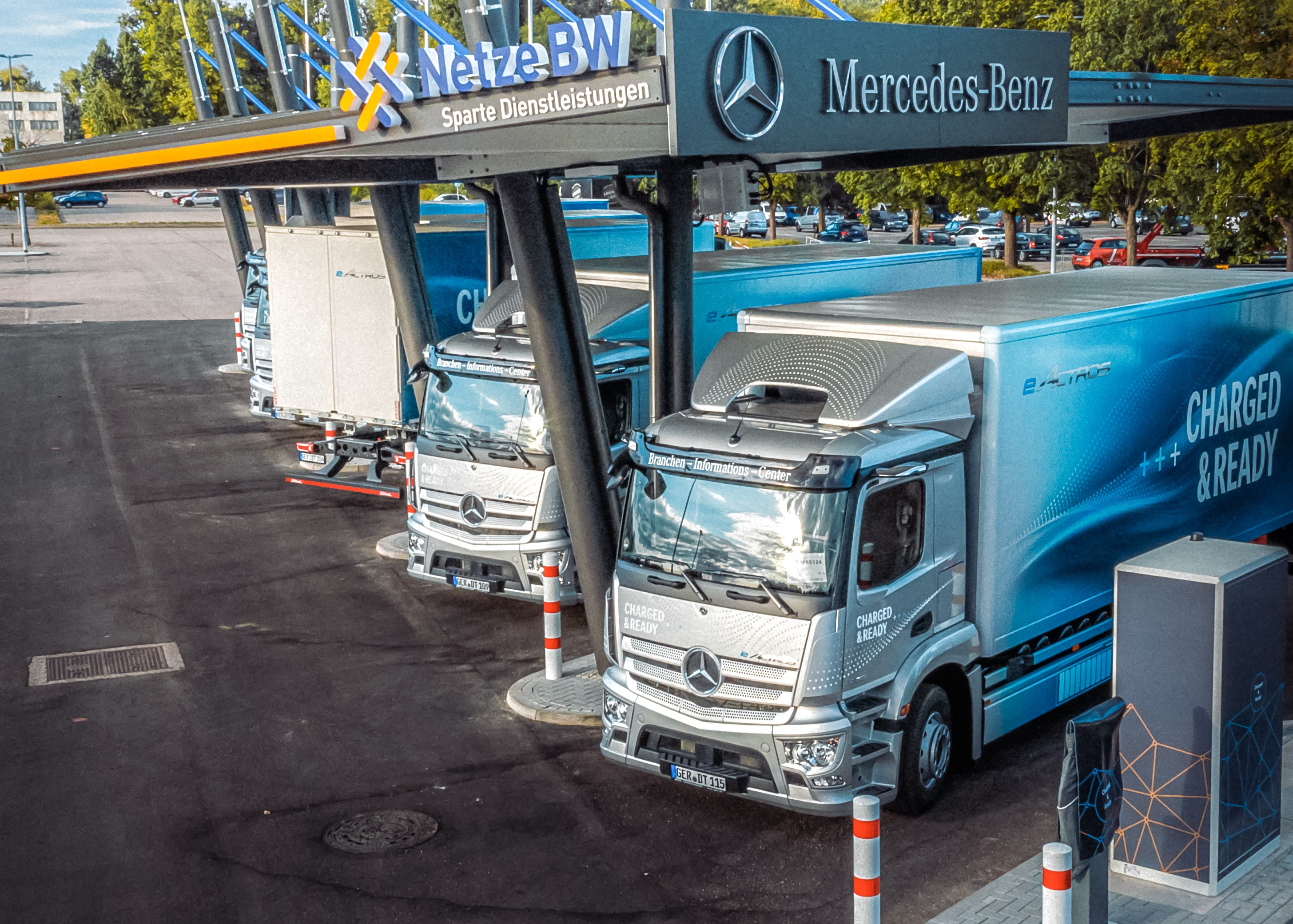
The future of UK haulage is electric
The UK Zero Emission Road Freight Demonstrator trial suggests that both on price to buy and operate, battery EVs are likely to be the choice of haulage companies.
Summary: A study looking at real world costs of transitioning road freight transport to zero emissions vehicles suggests that battery electric vehicles (BEVs) are the most likely vehicle that UK haulage companies will switch to from diesel driven (no pun intended) by both initial OEM costs and future operating costs.
Why this is important: In the EU in 2020, road freight transportation accounted for more than 77% of total inland freight transportation.
The big theme: Transportation has the highest reliance on fossil fuels of any sector. Approximately 95% of its energy comes from them. For 45% of countries transport is the largest source of energy related emissions and it is the second largest source for the rest. Changing how we transport ourselves and our goods helps with both climate change and with health and well-being issues and is a rich vein for investment.

The details
Summary of a story from Freight Industry Times
Early findings from the UK Zero Emission Road Freight Demonstrator (ZERFD) trial suggest that, based on both the price to buy and operate 'zero emissions' heavy goods vehicles (HGVs), haulage companies are more likely to choose battery electric vehicles (BEVs) over hydrogen fuel cell electric vehicles (FCEVs), according to Professor David Cebon, Director of the Centre for Sustainable Road Freight (CSRF). The trial which focused on HGVs in the 40t to 44t gross vehicle weight range, obtained actual quotes from OEMs for what they would charge for different tractor units. For BEVs, the asking price ranges were a little over double the cost of an equivalent diesel unit at £250,000 to £350,000 for units with between 500kWh and 600kWh batteries. However equivalent FCEVs were between £500,000 and £700,000.
In terms of operating costs, the CSRF has collected a large amount of data for different types of UK Fleets and, using validated simulation models, predicted charging requirements and battery sizes needed to replicate a 'day in the life' of a logistics vehicle (currently a diesel truck) with a BEV. The team could not find a case where a BEV with a large battery of between 600kWh and 800kWh, along with suitable charging infrastructure, could not do current logistics tasks.
Another alternative discussed is an Electric Road System (ERS) where the lorry batteries required are much smaller at ~150kWh and vehicles do not need to stop to recharge. Professor Cebon highlighted that the energy consumption, carbon emissions and total cost of ownership would be significantly lower than for BEVs with big batteries and the savings could fund the additional infrastructure required.
Why this is important
HGVs emitted around 18% of all road vehicle CO2 emissions in 2021 according to UK Department for Transport figures, despite representing only 1.2% of the total number of vehicles on the road and only 5% of total miles driven. In the EU in 2020, road freight transportation accounted for more than 77% of total inland freight transport, so finding a cost effective way of reducing emissions is important.
These early findings from the ZERFD trial and CSRF's conclusions that BEV, either standalone or as part of an ERS, would be the likely preferred option by road haulage companies in the UK ties in with a study published last month by Agora Energiewende and Transport & Environment. That study concluded that diesel would be almost completely replaced by zero emissions vehicles in Europe by 2035. A very small proportion of vehicles would need to remain diesel due to range limitations according to the study - 0.2%. The expectation is that these zero emissions vehicles would be BEVs as the study points out that "[e]ven at lower hydrogen prices or lower fuel cell costs, FCEVs only become the most cost-effective technology from 2030 onwards for a very limited share of the fleet and only in a small number of countries." Interestingly, MEPs recently voted to set minimum mandatory national targets for the deployment of alternative fuel infrastructure including electric car charging pools every 60km along main EU roads and hydrogen refuelling stations every 100km along main EU roads. Given the findings from the studies mentioned here for road freight vehicles and the low uptake of passenger FCEV relative to BEVs - 15,538 FCEVs sold globally in 2021 compared with 4.6 million BEVs and 1.9 plug-in hybrid EVs (PHEV) - the push for a hydrogen fuelling infrastructure seems to have disproportionate priority.
Hydrogen will be important in the transition to a more sustainable world. It is an important raw material for a number of key industrial processes, including to remove sulphur from oil and in the manufacture of fertilisers and other chemicals. It is a decarbonisation problem in its own right. The Hydrogen Science Coalition points out that almost 99% of the 120 million tonnes of hydrogen produced globally is made from fossil fuels. Green hydrogen which is produced from renewable energy sources provides a pathway for decarbonisation with little left for areas such as transportation or home heating and cooking. Rolls-Royce recently tested an aircraft engine running on hydrogen. However, as Michael Liebrich pointed out a large multi-aisle aircraft like a Boeing 747 would need "more than 1 million litres of hydrogen to deliver the equivalent range of 250,000 litres of jet fuel" - the subject of decarbonising the aviation industry is a whole other blog (coming later).
Whilst important innovations are being made in decarbonising road haulage it is also worth considering ways of reducing road haulage miles, and other freight transportation miles, in the first place. Where possible products should be produced and consumed locally, for example food and other agricultural products which might include behavioural changes such as eating more seasonal produce. A study published in June 2022 estimated that when the entire upstream food supply is considered, global food miles account for about 19% of total food-system emissions. Global freight transport associated with fruit and vegetables contributes 36% of food miles emissions or almost twice the amount released during their production.
Something a little more bespoke?
Get in touch if there is a particular topic you would like us to write on. Just for you.
Contact us
Please read: important legal stuff.

